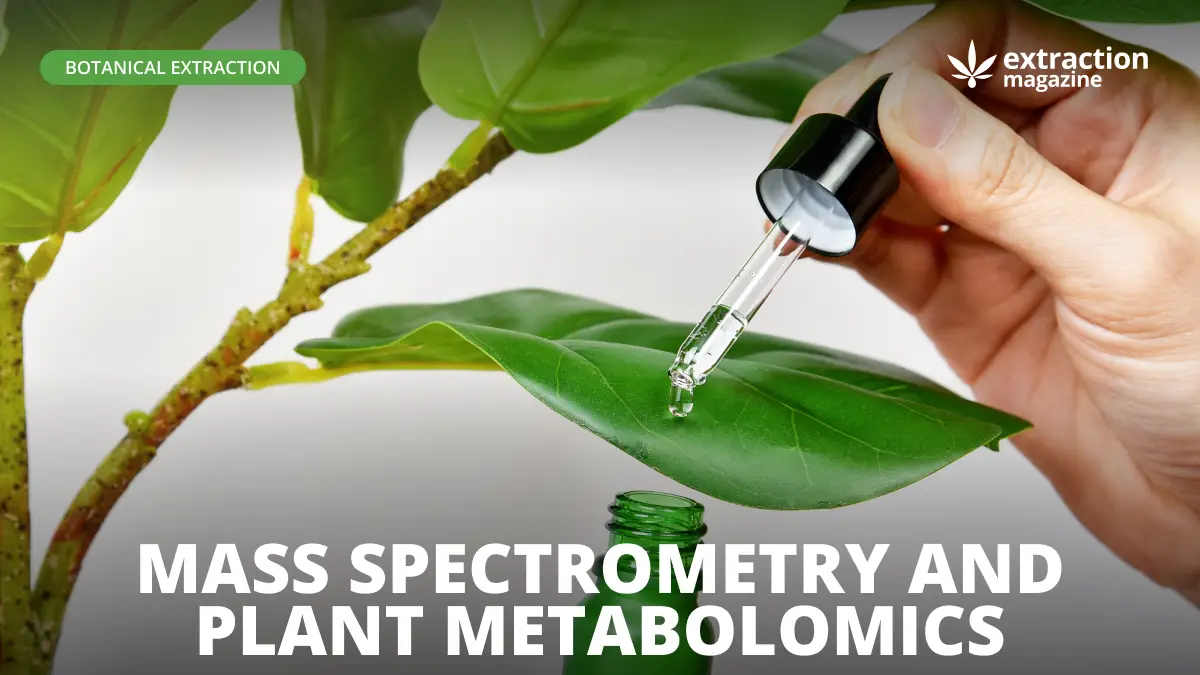Mass spectrometry (MS) is an efficient technique used to study plant metabolites and their qualitative and quantitative determination.
Scientists and cannabis growers use the combination of mass spectrometry and other analytical techniques in order to study and clarify the differences in composition of cannabis strains. Knowing the chemical composition of each chemovar can help refine the breeding of cannabis plants, develop new cannabis products, and examine the effects of cannabis on human health.
What is Plant Metabolomics?
Plant metabolomics is a field of study relating to the overall chemical profile of a plant. This can mean the changes in the chemical composition of a plant as it grows or the differences in the chemical composition of different strains of cannabis. One can also use plant metabolomics to study the effects of environmental conditions on the chemical composition of cannabis plants. [1]
Analytical techniques such as nuclear magnetic resonance (NMR), mass spectrometry (MS) and chromatographic techniques constitute the metabolomic tools to identify plants composition and study the variations of active plants constituents.
Plant metabolomics is crucial to the cannabis industry because it is used to improve plant breeding, study the effects of cannabis on human health, and develop new cannabis products
Plant metabolomics can help identify genetic markers that are associated with the production of different cannabinoids and terpenes. With this information, growers can breed cannabis plants that have the desired chemical profile, with improved quantities of a particular cannabinoid or specifically tuned to treat a peculiar medical condition.
Plant metabolomics also contributes to the study of the plant effects on human health and their biological action and interaction with our body.
What is Mass Spectrometry?
MS uses an electric field to separate charged molecules based on their mass-to-charge ratio. Through this analytical technique scientists can identify the different compounds in a sample.
The mass spectrometer consists of three main components:
- The ionization source ionizes the sample, converting it into gas-phase ions.
- The mass analyzer separates the ions by mass-to-charge ratio.
- The detector measures the intensity of the ions.
There are many types of ionization sources, each with advantages and disadvantages. The most common type of ionization source is electron ionization. The ions of the components of the sample are produced by high-energy electrons interacting with the sample gas or solid phase atoms and molecules.
The mass analyzer separates the ions by mass-to-charge ratio. The most commonly used one is the quadrupole mass analyzer. It contains four parallel rods connected to an electric field. The ions pass through the quadrupole mass analyzer but only ions with a specific mass-to-charge ratio can pass through the field.
The detector measures the intensity of the ions and the most popular one is the electron multiplier, which amplifies the signal of the ions, making it possible to take a measure. [2]
MS is a valuable tool for scientists and it is used in many fields, including chemistry, biology, medicine, and forensic science.
How is Mass Spectrometry Used in Cannabis Analysis?
MS is often used to study the chemical composition of cannabis plants, as it can be used to identify and quantify the different cannabinoids, terpenes, and other compounds that are present in the plant.
This kind of analytical methodology is widely applied in the metabolomics analysis and in the cannabis industry it can be applied in different operations:
- Potency testing: MS can accurately measure tetrahydrocannabinol (THC) and cannabidiol (CBD) levels present in cannabis products ensuring the desired potency;
- Contaminant testing: the presence of contaminants, such as pesticides, heavy metals, and mold can be detected in order to ensure a safe production of cannabis derivatives;
- Strain differentiation & research: the chemical profiles of different cannabis strains can be identified, in order to define the specific characteristics, like flavors or effects associated to each chemovar and the biological activity on human body. [3]
Conclusion
The application of mass spectrometry to plant metabolomics has the potential to revolutionize the cannabis industry, leading to the improvement of existing strains, the development of new cannabis strains and products, and the discovery of new cannabinoids with therapeutic potential.
Sources:
[1] Jorge, T. F., Mata, A. T., & Antonia, C. (2016, October 28). Mass spectrometry as a quantitative tool in plant metabolomics. Phil. Trans. R. Soc. A., 374. 20150370
[2] Urban, P.L. (2016). Quantitative mass spectrometry: An overview. Philosophical transactions. Series A Mathematical, physical, and engineering sciences., 374(2079). https://doi.org/10.1098/rsta.2015.0382
[3] Nie, B., Henion, J., & Ryona, I. (2019, May). The Role of Mass Spectrometry in the Cannabis Industry. Journal of the American Society for Mass Spectrometry, 30(5), 719-730. 10.1007
![]()

